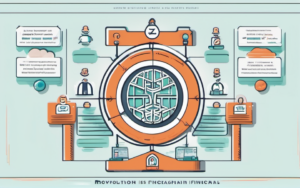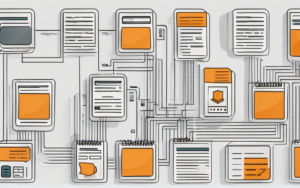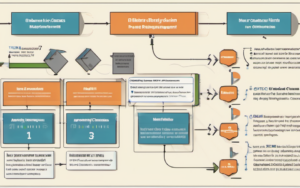Blockchain innovation is rapidly transforming industries, offering unprecedented levels of security, transparency, and efficiency. Its decentralized nature and immutable ledger technology are disrupting traditional models and creating new opportunities across the globe. This exploration delves into the multifaceted impact of blockchain across various sectors, highlighting its potential and addressing key challenges.
1. Introduction
1.1 The Rise of Blockchain Technology
Blockchain technology, initially popularized by Bitcoin, has evolved far beyond its cryptocurrency origins. Its core functionality – a distributed, immutable ledger – offers solutions to long-standing problems in numerous industries. The decentralized nature eliminates single points of failure, enhancing security and trust. This foundation has enabled the development of sophisticated applications, driving significant blockchain innovation across various sectors.
1.2 Blockchain’s Potential for Disruption
The potential for disruption is immense. Blockchain’s ability to create secure, transparent, and efficient systems is challenging established processes. This is evident in sectors ranging from finance, where it’s revolutionizing payment systems and asset management, to healthcare, where it is enhancing data security and improving patient care. The impact of blockchain on supply chain management, for example, is already being felt, with improved traceability and reduced fraud. This disruptive potential is continuously expanding as blockchain technology matures and finds new applications.
2. Blockchain in Finance
2.1 Cryptocurrencies and Decentralized Finance (DeFi)
The rise of cryptocurrencies like Bitcoin and Ethereum is arguably the most visible manifestation of blockchain innovation in finance. However, the potential extends far beyond digital currencies. Decentralized finance (DeFi) is leveraging blockchain to create alternative financial systems, offering peer-to-peer lending, borrowing, and trading without intermediaries. This bypasses traditional financial institutions, potentially increasing efficiency and access to financial services.
2.2 Streamlining Payments and Transactions
Blockchain technology offers significant advantages in streamlining payments and transactions. Smart contracts, self-executing contracts with the terms of the agreement directly written into lines of code, automate processes, reducing delays and costs. International transfers, often slow and expensive through traditional banking channels, can be significantly expedited and cheaper using blockchain-based solutions. This is particularly relevant for cross-border payments and remittances.
2.3 Enhancing Security and Transparency
Blockchain enhances security and transparency in financial transactions. The immutable nature of the ledger makes it extremely difficult to alter or tamper with records, reducing the risk of fraud and data breaches. This increased transparency builds trust among participants, fostering greater collaboration and efficiency within the financial ecosystem. The application of blockchain technology in finance is continually evolving, leading to further blockchain innovation in this crucial sector.
3. Blockchain in Supply Chain Management
3.1 Tracking Goods and Materials
One of the most impactful applications of blockchain innovation is in supply chain management. Tracking goods and materials throughout the entire supply chain, from origin to consumer, becomes significantly easier and more secure. Each transaction and movement is recorded on the blockchain, providing a transparent and auditable trail. This is particularly crucial for industries with complex supply chains, like pharmaceuticals and food.
3.2 Improving Transparency and Traceability
Blockchain improves transparency and traceability, enabling businesses to identify and address issues quickly. Counterfeit products can be easily identified, and product recalls can be managed more efficiently. This increased transparency enhances consumer confidence and builds trust in the brand. The impact of blockchain on supply chain management is leading to significant cost savings and operational improvements.
3.3 Enhancing Efficiency and Reducing Costs
By automating processes and reducing the need for intermediaries, blockchain enhances efficiency and reduces costs across the supply chain. Real-time tracking of goods minimizes delays and improves inventory management. Reduced paperwork and manual processes lead to significant cost savings and increased productivity. The integration of blockchain into supply chain management systems is a key driver of blockchain innovation.
4. Blockchain in Healthcare
4.1 Secure Data Management and Sharing
The healthcare industry is grappling with challenges in data management and sharing. Patient records are often fragmented and difficult to access. Blockchain offers a solution by providing a secure and efficient way to manage and share sensitive patient data. This is particularly important for interoperability between different healthcare providers.
4.2 Improving Patient Privacy and Control
Blockchain enhances patient privacy and control over their medical information. Patients can grant access to their data selectively, improving their control over their own health records. The decentralized nature of blockchain ensures that patient data is not concentrated in a single, vulnerable location. Blockchain innovation in healthcare is revolutionizing how patient information is managed.
4.3 Streamlining Clinical Trials
Clinical trials are often complex and time-consuming. Blockchain can streamline the process by providing a secure and transparent platform for managing data, tracking participants, and ensuring the integrity of the trial. This can accelerate the development of new treatments and therapies. The applications of blockchain in healthcare continue to expand, driven by the need for secure and efficient data management.
5. Blockchain in Voting and Governance
5.1 Enhancing Election Security and Transparency
Blockchain technology can enhance the security and transparency of elections. By creating a tamper-proof record of votes, blockchain can reduce the risk of fraud and increase voter confidence. This is particularly crucial in ensuring fair and democratic elections.
5.2 Improving Governance Processes
Blockchain can also be used to improve governance processes, enhancing transparency and accountability. By recording government transactions and decisions on a public ledger, citizens can monitor the activities of their government and ensure greater accountability. This technology promises to revolutionize democratic processes and governance.
6. Blockchain in Digital Identity
6.1 Creating Secure and Verifiable Digital Identities
Blockchain is instrumental in creating secure and verifiable digital identities. Individuals can control and manage their own digital identities, securely sharing verified information with organizations and services. This reduces the risk of identity theft and fraud, and simplifies authentication processes.
6.2 Enhancing Data Privacy and Security
Blockchain enhances data privacy and security by providing a decentralized and secure way to store and manage identity data. Individuals have greater control over their data, and the immutable nature of the blockchain reduces the risk of unauthorized access or modification.
7. Challenges and Considerations
7.1 Scalability and Performance
One of the major challenges facing blockchain technology is scalability. As the number of transactions increases, the network can become slow and inefficient. Research and development efforts are focused on improving scalability and performance to meet the demands of large-scale applications.
7.2 Regulatory Uncertainty
The regulatory landscape for blockchain technology is still evolving. This uncertainty can hinder innovation and investment. Clear and consistent regulations are crucial for the widespread adoption of blockchain technology across industries.
7.3 Security Risks
While blockchain is inherently secure, it is not immune to security risks. Smart contract vulnerabilities, for example, can be exploited by malicious actors. Continuous research and development are crucial to address these security risks and ensure the robustness of blockchain systems.
8. The Future of Blockchain Technology
8.1 Emerging Applications and Use Cases
The applications of blockchain technology are constantly expanding. New use cases are emerging across various industries, driving further innovation and development. The potential for blockchain to transform society is immense, with implications for everything from supply chains to healthcare and beyond.
8.2 Continued Innovation and Development
The continued innovation and development of blockchain technology are crucial for realizing its full potential. Research and development efforts are focused on improving scalability, performance, and security, as well as exploring new use cases and applications. The future of blockchain is bright, with the potential to reshape many aspects of our lives.
The transformative power of blockchain is undeniable. Its ability to create trust, transparency, and efficiency is revolutionizing industries and creating new opportunities. As blockchain technology continues to evolve and mature, we can expect to see even more widespread adoption and further blockchain innovation, leading to a more secure, efficient, and transparent future.




